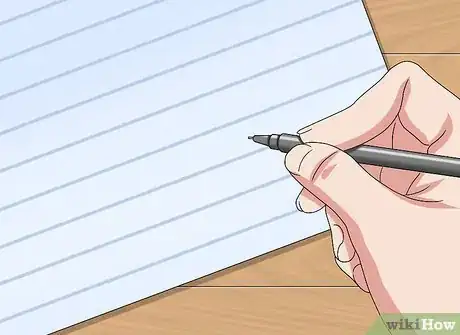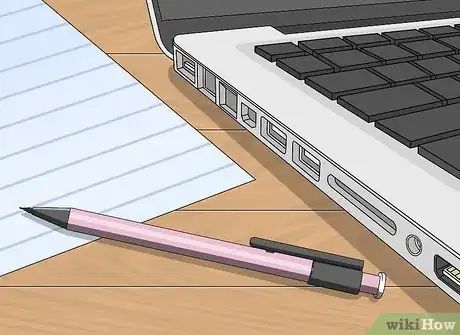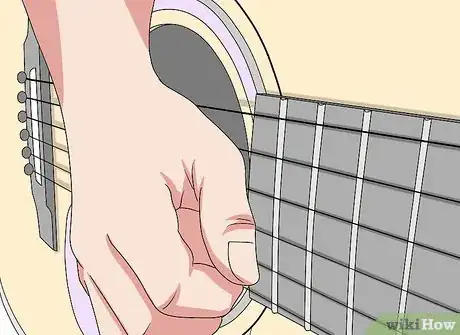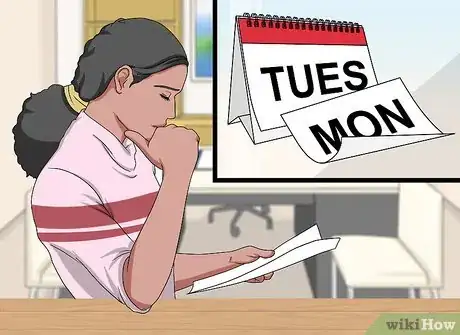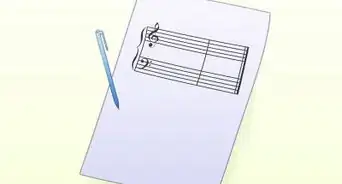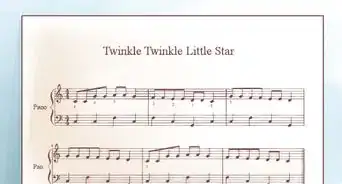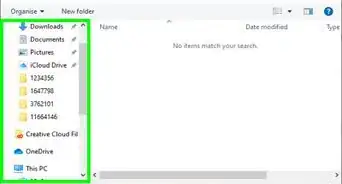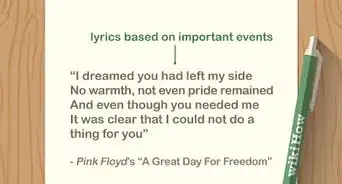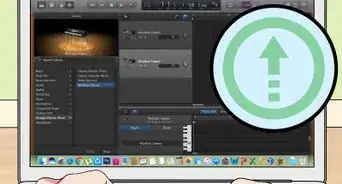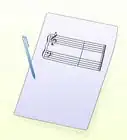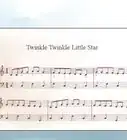This article was co-authored by wikiHow Staff. Our trained team of editors and researchers validate articles for accuracy and comprehensiveness. wikiHow's Content Management Team carefully monitors the work from our editorial staff to ensure that each article is backed by trusted research and meets our high quality standards.
There are 14 references cited in this article, which can be found at the bottom of the page.
wikiHow marks an article as reader-approved once it receives enough positive feedback. In this case, several readers have written to tell us that this article was helpful to them, earning it our reader-approved status.
This article has been viewed 251,490 times.
Learn more...
Writing a symphony is perhaps the most ambitious task a composer can undertake. Although Mozart was composing symphonies when he was a boy, for most people, construction of a symphony can take months or years. Although writing a symphony is beyond the scope of any single how-to article, we'll help you learn more about the process of planning, writing and revising a symphony.
Steps
Planning Your Symphony
-
1Get inspired. The most important thing you’ll need while writing your symphony is an idea. To generate ideas, you’ll need to start thinking creatively. Set up a musical session with some of your instrument-playing friends to improvise some potential melodies. Look back through old journals to remind yourself of feelings or life events that you might be able to use in your work.
- Keep a notebook with you at all times to record ideas. Whenever an idea comes to you, write it down immediately so you don’t forget.[1]
-
2Listen to composers you admire. Practice writing your music the way those composers wrote theirs. It isn’t plagiarism to be inspired by someone else, and that inspiration fused with your own point of view will make it so that your music will sound completely like your own.[2]
- Try to listen to a wide cross-section of different symphonies. Different composers have different styles and use different techniques. Listening to a lot of different styles of symphonies will help you become inspired to write your own. Check out the list of symphony composers on Wikipedia.[3] The list is reasonably complete dating from the Baroque era to present and most composers on the list aren't well known. [4]
Advertisement -
3Pick your themes. Essentially, symphonies are musical stories, and should have characters, or, themes. These themes are then explored in different keys throughout the piece and in music, in what’s known as exposition.[5]
- Try to pick contrasting themes, like good versus evil.
-
4Create an outline. Symphonies are traditionally composed of four separate movements, which each have different forms.[6] The first movement tends to be in Sonata form. The second movement is usually on the slower side and may be a set of variations. The third movement will generally be a Minuet or Scherzo and Trio. And the fourth movement is there to give the piece some closure and is often in rondo form.
- In your outline, list out everything you want to pin down about your symphony. This can include your inspiration, emotions, form, key and themes. List these out for each of your individual movements.
- Don’t be afraid to make the form your own. If you want to create something different than the traditional four-movement symphony, do that. Sometimes composers swap the second and third movements. There have been three movement symphonies, usually omitting the minuet. There are five movement symphonies, often adding a March, or maybe another Scherzo or Minuet between the third and last movement. There are some with more than five movements, taking inspiration from Beethoven's 9th; the best known of these including the Romeo et Juliette symphony by Berlioz and Mahler's Symphonies. Rarer still are some with two movements, like Schubert's 8th 'Unfinished' Symphony, and Sibelius's 7th Symphony, which is a single-movement symphony. Often symphonies since the Romantic era have had a "theme", which ties all of the movements together, and which may stay the same or vary as well. [7] Think outside the box and have fun with it.
Writing Your Symphony
-
1Gather your materials. In order to write, you will either need staff paper and a writing implement, such as a pencil or pen, or some kind of music writing software. Writing by hand is problematic because, in order to hear what you’ve played, you have to be able to play an instrument or you need to find someone else who can.[8] With music notation software, you’re able to hear what you’ve written immediately, using the computer playback.
- Some examples of music writing software include: Sibelius First, Finale and MagicScore Maestro.[9]
- For free music writing software, try MuseScore and Lilypond.
- If you play or have access to an instrument, you can try playing your melodies using your instrument to hear how they sound before writing them down.
-
2Start writing. Using the outline you created earlier, construct each individual movement. While writing, you’ll need to be constantly making decisions regarding different musical techniques and styles within your piece. Some of those techniques include:[10]
- Dynamics
- Rhythms
- Intervals
- Harmonies
- Theme development
- Counterpoint
- Voice leading
- Orchestration
-
3Assign melodies to different instruments. Traditionally, symphonies are written for the following instrumental types: strings (violin, viola, cello, and bass), woodwinds (2 flutes, 2 oboes, 2 clarinets, and 2 bassoons), brass (2 French horn, 2 trumpets with a small orchestra), and percussion (2 tympani, triangle, and cymbal) for a small orchestra. A medium size is when you can add a piccolo, English horn, bass clarinet, contra bassoon to the woodwinds and double the number of French horns and add 3 trombones plus a tuba to the brass as well as extra percussion instruments. If you can go larger, go for it.
- You don't, however, have to stick with traditional instrumentation. If the instruments are available and there are players to play them, feel free to use other instruments in your symphony either adding them or using them like different colors (eg. replace one traditional instrument with one non-traditional one). For example, Adolphe Sax, the inventor of the saxophone family, designed his instruments for the orchestra (built in the keys of B♭ and E♭) as well as the military band. You could also include an instrument that's been revived like one of the recorders, the viola da gamba or the oboe da caccia for example.
- Some symphonies also have vocal accompaniment.[11] Try giving the same melodies to different instruments at different times to create a motif within the piece.[12]
- Pay attention to layers and texture. There should never be any more than five layers happening at one time.[13]
Editing Your Symphony
-
1Give yourself a couple days away from your symphony. Use this time to think about and do other things. Taking time away from your music will allow you to come back to it with fresh ears, so you can edit with a clear head[14] .
-
2Re-listen and revise. Play through your symphony again. Take out anything that doesn’t jar with your artistic vision. If you feel that your symphony is too long or too short, adjust accordingly.
- Try playing through your symphony on the piano. Even if you’re not a skilled pianist, you should still be able to play the melodies. As a composer, playing through your music will help with making sure your piece isn’t too muddled. It will also enable you to see what is in every register at all times.[15]
-
3Invite your friends and other musicians you trust to perform and give feedback on your symphony. Listening to your symphony played all the way through will give you a whole slew of new insights on your work. Your friends and performers might also have suggestions of changes you can make that you might never have thought of yourself.
- Do not get defensive about their suggestions: they are only trying to help and you are not bound to utilize any of their feedback if you don’t agree with it.[16]
Community Q&A
-
QuestionCan I work on my symphony while my girlfriend is here?
 Community AnswerYes, but most symphonies are composed in silence, so you should probably wait until she leaves.
Community AnswerYes, but most symphonies are composed in silence, so you should probably wait until she leaves. -
QuestionCan I compose a symphony about a tragic event? Is it morally acceptable?
 Community AnswerNot only is it morally acceptable, it is recommended - the more angst, the better. If the tragic event was something you experienced firsthand, it would be advisable to start writing the music as soon as possible, ideally while you can still painfully relive every detail so you can fully infuse the sentiments into your composition. Time heals wounds, but art endures as a faithful reminder.
Community AnswerNot only is it morally acceptable, it is recommended - the more angst, the better. If the tragic event was something you experienced firsthand, it would be advisable to start writing the music as soon as possible, ideally while you can still painfully relive every detail so you can fully infuse the sentiments into your composition. Time heals wounds, but art endures as a faithful reminder. -
QuestionHow many symphonies should I write? Brahms only wrote four, but Haydn wrote over 100. What's a suitable middle ground?
 Community AnswerWrite as few or as many as you have in you. Start with one, and see where that gets you.
Community AnswerWrite as few or as many as you have in you. Start with one, and see where that gets you.
Warnings
- Do not give up hope. Writing a symphony is a terribly difficult process and a huge undertaking. Be proud of yourself for even giving it a try.⧼thumbs_response⧽
Things You'll Need
- Expert knowledge of music theory
- Staff paper
- A pencil or pen
- Music notation software
- A keyboard and microphone, in order to record
References
- ↑ http://betterwritinghabits.com/the-3-notebooks-every-writer-should-keep/
- ↑ http://www.katiagocs.com/blog/10-ways-to-make-your-symphony-orchestra-scores-shine
- ↑ https://en.wikipedia.org/wiki/List_of_symphony_composers
- ↑ http://www.huffingtonpost.com/2014/06/24/music-creative_n_5511501.html
- ↑ http://www.musicoutfitters.com/music-dictionary-e.htm
- ↑ http://www.violinonline.com/unit3_7.html
- ↑ https://www.artofcomposing.com/09-process-of-composing
- ↑ http://www.gerarddutton.com/?p=70
- ↑ http://music-notation-software-review.toptenreviews.com/
- ↑ http://music.tutsplus.com/tutorials/developing-motives-or-how-to-write-a-symphony-with-only-four-notes--audio-5003
- ↑ http://www.english-online.at/music/orchestra/orchestra.htm
- ↑ http://music.stackexchange.com/questions/3467/recognizing-the-motif
- ↑ http://www.katiagocs.com/blog/10-ways-to-make-your-symphony-orchestra-scores-shine
- ↑ http://www.bustle.com/articles/66871-5-reasons-why-writers-should-take-a-break-from-writing-every-now-and-then-and-what
- ↑ http://www.katiagocs.com/blog/10-ways-to-make-your-symphony-orchestra-scores-shine
- ↑ http://www.wishfulthinking.co.uk/2007/09/12/6-tips-for-dealing-with-feedback-on-your-creative-work/
About This Article
If you want to write a symphony, start by finding a source of inspiration, like the seasons, holidays, or even a person, and listen to symphonies by composers who you admire. Download a music writing software, and begin arranging the symphony, working in different movements that have a distinct sound to them. Occasionally, play back the music that you've written to hear how it sounds. Be sure to assign melodies, harmonies, rhythms, and intervals to each instrument that you are writing a part for. For tips on revising and editing your symphony to perfect it, read on!



